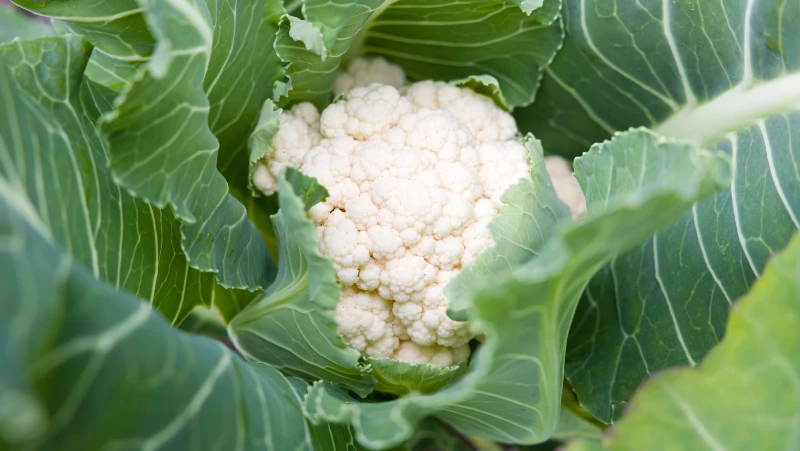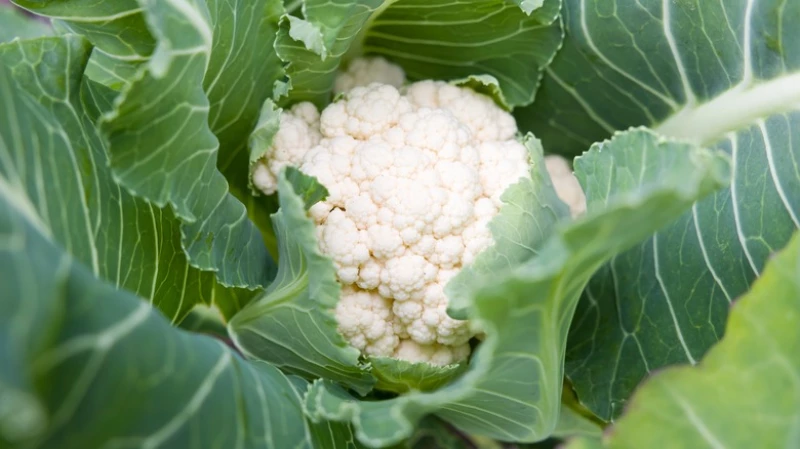When it comes to growing cauliflower in your home garden, temperature is key. The ideal temperature for cauliflower growth is between 60 and 65 degrees, with a maximum of 75 degrees. In regions where temperatures remain high throughout fall and winter, such as the south or west coast, it is best to plant cauliflower in early winter when temperatures drop to the 60s and 70s.
Cauliflower, a versatile vegetable used in various cuisines, can be grown in your backyard. As winter approaches, farmers and home gardeners are getting ready to plant their winter crops, including cauliflower, broccoli, and carrots. To ensure successful growth, it is important to understand the best temperature and soil conditions, as well as planting tips for cauliflower in your winter garden.
Transplanting in winter
Since cauliflower doesn't thrive in hot and sunny temperatures, you must create a foolproof gardening plan to ensure it grows big and healthy. One way to achieve healthy cauliflower in the cold seasons is through transplanting, which allows the seeds to grow indoors before transferring them to an outdoor garden. Once the cauliflower has grown at least two sets of true leaves (not seed leaves, which grow first), it's time to introduce it to sunlight. Most outlets suggest doing this around two weeks before the last frost.
If temperatures are too hot, cruciferous vegetables such as cauliflower will sprout faster, which is why some need to rethink growing the popular vegetable in their garden. Unfortunately, planting vegetables too early (and in the wrong temperature) can stunt growth, cause wilting, and increase their susceptibility to disease. Beyond their preference for colder temperatures, growing cauliflower at the wrong time can affect our diet and open us up to diseases like E. coli, Salmonella, and Listeria. Don't worry — there are steps you can take to ensure your cauliflower grows safely.
Seeding and caring for your cauliflower
To begin the planting process, it is recommended to seed the vegetables indoors for about 4 to 6 weeks. Before providing essential nutrients to each cauliflower head, it is important to ensure that the pH balance of the soil is between 6.5 and 7.5. When planting the cauliflower seeds, create a small hole in the soil and place the seeds about ½ inch inside. You can choose from multiple types of cauliflower, including white, green, and purple. Weekly fertilization with a nitrogen-based fertilizer is necessary until the seeds are ready to be transitioned to the garden. It is advised to space the plants approximately 18 to 24 inches apart from each other, with 30 inches between each row. Giving the plants enough room to grow will allow the cauliflower seeds to reach their maximum size. Once the plants are about the size of a golf ball, make sure to protect them from the sun.
When it comes to cruciferous vegetables like cauliflower, it is important to follow basic gardening advice such as watering them 1 to 2 inches per week and allowing the water to soak through the soil. While cauliflower can tolerate cold temperatures, it can only withstand temperatures as low as 26 degrees Fahrenheit. Once the cauliflower head reaches a diameter of about 6 to 8 inches, it is ready to be harvested.









